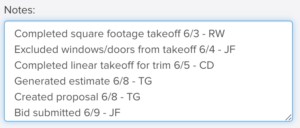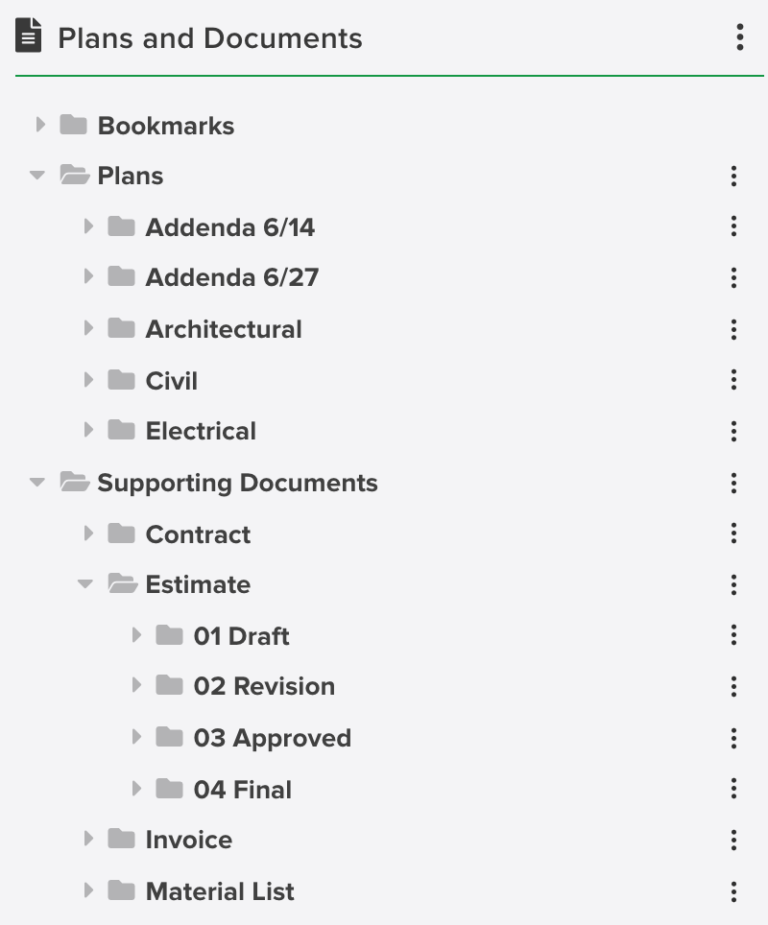
Setting up a clear construction file organization and storage structure is one of the most overlooked tasks of any business, but it can really set you up to save time, avoid duplicating work, and make remote collaboration easy.
Just a few minutes of thought and planning can go a long way toward making your workflow smoother.
Here are 3 key places to start remote file storage & organization.
1. Store Your Files in the Cloud
IT teams have been warning of the dangers of saving files on personal desktops for years, and for good reason. The risks are simply too high. Information can be lost if:
• An employee’s system crashes
• An employee is sick or injured
• An employee is using an old version of the software and the file gets corrupted
• An employee accidentally uses an old version of the file
Although there are construction businesses still using desktop-based software, it’s quickly becoming a thing of the past. The fact is, even aside from the risk of data loss, if your team will be working remote (home, field, jobsite), cloud-based software and storage has become a necessity.
Cloud storage allows your team to access any file – from anywhere, at any time. Multiple users can access your documents in real time and work together on projects from across town or anywhere in the world.
Cloud Storage for Preconstruction
For estimators in particular, the ability to access plans remotely and collaborate on takeoffs is a game changer. If your team uses STACK, for example, several of your estimators can be working on the same set of plans at once.
Someone might be measuring full square footage for painting while a colleague follows behind and removes windows and doors from the takeoff. Or one estimator might measure linear feet for wiring while another performs a count of light fixtures.
Your team can also leave notes on plan files or in the project itself within STACK, which can make an impact not only for teams working in different time zones or on staggered schedules, but also for supervisors to quickly gauge completed tasks and productivity.

2. Create File Naming Conventions and Folder Structures within Projects
Have you ever misplaced a file? It’s nerve-wracking and time-wasting wading through the mess on your desktop or your download folder. With established folder structures and naming conventions in whatever storage platform you use, you can put an end to missing files.
For each project, you likely have multiple types of documents that all need to be kept together for quick reference. An example construction business folder structure for your projects might be:

If you follow this same structure for each project, your team will know exactly where to look for each type of document they need.
When there are multiple files within each folder, you need a file naming convention. All this means is a consistent way to name files. Some tips include:
• Use a readable file name (20200714_Amended_Contract vs 20200714_amd) so any staff can easily identify what the file contains without having to open it.
• Use dates (when applicable) in the same format every time. YYMMDD or YYYYMMDD are the best formats so that files appear in chronological order.
• Use employee initials and dates for updated versions. If your team is making revisions but you need to save the originals, require that they add something like “_JR071420” to the end of the file name without changing the rest of the name.
• Use underscores (Amended_Contract) or camelCase (AmendedContract) rather than spaces or periods to separate words in file names.
• Document your chosen naming conventions and share them with all staff so everyone is following the same rules at all times.
For project plans, industry best practice is to separate each page and name by page number – but make sure you have them stored in a location where it’s clear which project they belong to. If you use STACK as your takeoff tool, this is done automatically for you within your project. (There’s also the added bonus of hyperlinking among pages for quick access to any details referenced on other plan pages.)
3. Classify Projects Effectively
You now have a structure for folders and documents within each project, but how should you organize projects themselves? Implementing a simple classification system can be helpful.
Within STACK, for example, you can use color coding to identify the status of a project (bidding, pending bid results, on hold, won, lost, etc.), and you might also find it helpful to add this status into the project name for quick reference. You can also assign a project to a team member, such as the lead estimator. With these classifications, you’re then able to sort by project status and assignee.
How to Use Project Classifications
When you’re bidding a lot of jobs or have a historical backlog of past projects, sorting them can help to streamline your planning process and reflect on old data to identify trends or problems. Here are some ways you might structure specific views:
• View lost projects assigned to John Smith. You can use this view to examine John’s estimates and determine if there’s an area where he’s consistently bidding too high, or if there are other problems with his bids.
• View only projects with bids won for a quick glance at what’s in your pipeline as you work on scheduling.
• View by projects pending bid results to make follow-up calls.
• View by completed projects to generate final invoices.
The most important thing to keep in mind – in terms of document organization – as you get your precon team on board for remote collaboration is that everyone knows and follows the same set of rules. This will go a long way toward alleviating frustration and eliminating duplicated work.
Interested in seeing STACK in action for cloud takeoffs and document storage? Schedule a demo today.








